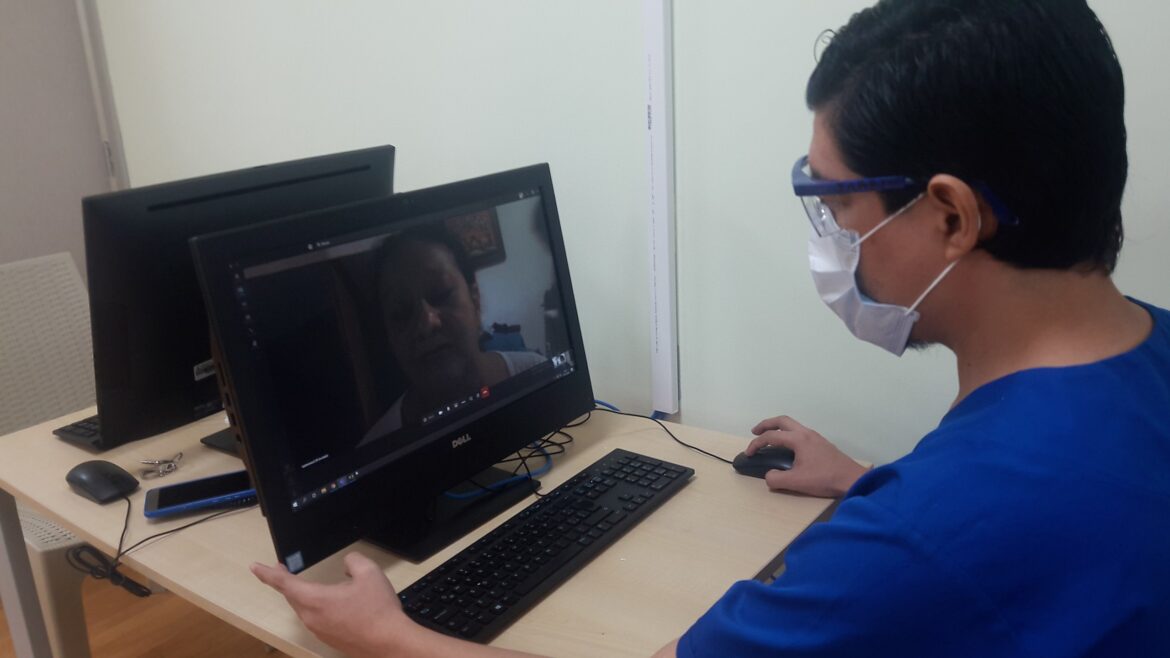
Image: Ceibos, CC BY-SA 4.0
By Chloe Trofatter
Capital News Service
Between February and April last year, primary care telehealth visits in Michigan jumped over 59%, according to the U.S. Department of Health and Human Services.
“Telehealth, of course, is important during the COVID crisis,” said Dennis Litos, the CEO of the Michigan Primary Care Association, an advocacy group for 44 health centers that provide for underserved communities.
These centers range in location from Houghton Lake and Traverse City to Mount Pleasant and Detroit.
The Michigan Department of Health and Human Services implemented emergency COVID-19 policies allowing offices to be paid for telehealth care and services to patients through video conferencing.
These policies also allow voice-to-voice care over the phone. That made care more accessible for rural and poor communities where video equipment and internet services aren’t as readily available, Litos said.
Telehealth allows primary care facilities to maintain basic care of their patients, as well as to expand more in-depth care for behavioral health and addiction treatment during the pandemic, he said.
The Primary Care Association-affiliated facilities, for example, use medication-assisted treatment for substance abuse and addiction, but it requires monitoring.
Telehealth makes such treatments possible while preventing unnecessary direct coronavirus exposure between patients and medical staff.
According to the Centers for Disease Control and Prevention, telehealth benefits providers and their employees in many ways.
For example, some staff no longer have to risk working in medical facilities and can instead work from home — reducing their exposure and the need for already-scarce personal protection equipment.
Patients seem to like telehealth services too, according to a national survey from Press Ganey, a health care consulting firm based in South Bend, Indiana.
The May 2020 survey found that patients were more highly satisfied with their services and the attentiveness of their provider when in a telehealth visit rather than an in-person appointment.
“We want them to keep it a part of standard practice going forward.” Litos said.
“These services could be beneficial during a typical flu season,” he added. “ They have proven to be more convenient and could be productive for chronic patients who need regular care but are not noticing significant changes in their condition.”
The expansion of telehealth services was a result of the Coronavirus Aid, Relief and Economic Security Act, or CARES, passed in March 2020.
To extend or maintain these services further legislation must be passed, according to the American Hospital Association.
In January, a bipartisan group of U.S. representatives reintroduced a bill to permanently allow telehealth services. Bills to do the same were introduced in Congress last year but failed to pass.
The legislation, which is in committee, would allow the U.S. secretary of Health and Human Services to permanently waive telehealth restrictions from the Social Security Act.
Telehealth benefits communities because it expands access to quality health care regardless of location, according to the National Library of Medicine, it also saves time and money for patients and their providers.
According to one co-sponsor, Rep. Doris Matsui, D-California, it would, “advance our broader mission to equalize access to care” for rural and underserved communities.